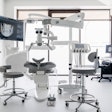Dear Imaging Insider,
Much of the buzz at the International Association of Dental Researchers (IADR) meeting in Toronto last week centered on the growing importance of early caries detection and management in the overall health of a community. Not surprisingly, next-generation imaging technologies are expected to play a key role.
At the IADR meeting there were posters and presentations on cone-beam CT, micro-digital photography, laser fluorescence, and photothermal imaging. These technologies also found their way into discussions of public health policies in both developed and developing nations. As John Featherstone, M.Sc., Ph.D., dean of the University of California, San Francisco School of Dentistry, noted in his talk on caries management and prevention, "Early detection is the signal to intervene, not do surgery."
In his presentation on the value of caries detection in facilitating preventive therapies, Nigel Pitts, B.D.S., Ph.D., professor of dental health at the University of Dundee, rattled off a list of advanced imaging devices now available to general dentists. But as nifty as technologies like fiberoptic transillumination and quantitative laser fluorescence are, the goal is not merely early detection for the sake of detection, Dr. Pitts emphasized.
Here at DrBicuspid.com, we've spent the last several weeks exploring many of these devices to bring you the most up-to-date information about how they work, what they cost, and how they can be integrated into your practice.
In our Imaging Insider Exclusive, "Beyond x-rays: Part III -- OCT brings early decay to light," we delve into this laser-based technology, which is just beginning to make its way into dentistry. While optical coherence tomography offers the ability to image both hard and soft tissue with 10 times the detail of x-rays, it also carries a pretty big price tag. Even so, many dental experts think it will be worth it.
Part I of this same series questions how effective caries-detection devices such as the DiagnoDent and D-Caries really are, while part II examines the clinical efficacy and commercial viability of quantitative light fluorescence (QLF), which uses the innate optical properties of teeth to detect early demineralization.
In another DrBicuspid.com exclusive, Senior Editor Laird Harrison looks at the pros and cons of two competing CAD/CAM systems: the Cerec from Sirona and the new E4D from D4D Technologies. Although slightly more expensive, the E4D offers some nifty innovations that could tempt dentists away from the well-established Cerec.
Be sure also to check out part II of "Perfect panoramics," and learn the three key steps to reliable, high-quality panoramic x-rays. This Imaging Community article features a slide show that demonstrates firsthand the dos and don'ts of patient positioning.















